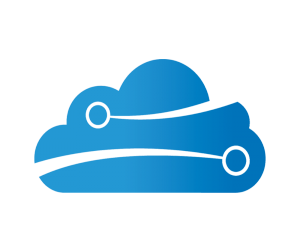ReFuelEU Aviation Regulation made easy with
Azzera Celeste and Skylegs integration

ReFuelEU basics
ReFuelEU Aviation is a cornerstone of the EU’s strategy to decarbonize aviation, focusing on Sustainable Aviation Fuels (SAF) and reducing unnecessary fuel tankering. The regulation applies to airports, fuel suppliers, and aircraft operators. Operators must:
- Avoid tankering fuel outside of Union Airports (UA) for economic reasons with the purpose to avoid fuelling at UA, where SAF mandates are charged.
- Uplift at least 90% of their yearly fuel requirements for flights departing Union
Airports.
Are you an Aircraft Operator in scope?
You are in scope of ReFuelEU, if in the previous compliance year (2024), you had:
- 500 or more commercial* passenger flights; or
- 52 or more cargo flights
departing from Union Airports (see the 2024 list).
The recently published updated guidance (EASA website) clarifies that flights performed by an aircraft registered under and Aircraft Operator’s (AOC) shall be deemed to constitute commercial air transport, irrespective of the manner in which the flight plan is filed, including whether filed under “G” (general) or “N” (non-scheduled).
Whether you already know you’re in scope, believe you’re not, or aren’t sure yet, understanding ReFuelEU is essential. The regulation’s thresholds may catch more operators than expected, and the official 2025 list is not comprehensive. Even if you’re not listed, you could still be required to comply! A quick review of your 2024 flight data with Azzera can clarify your status and help you prepare before reporting obligations begin.
Case Study – ASL Group: What to do when you’re in scope of ReFuelEU?
ASL Group, a Skylegs’ client, chose to manage their ReFuelEU compliance by leveraging the API connection between Skylegs and Azzera Celeste. They are required to monitor and report ReFuelEU compliance by 31st March 2026, for the year 2025.
For ASL Group, continuous monitoring is crucial to remove or to at least minimize the risk of non-compliance fines (up to €1,500 per tonne of “non-tanked” fuel). This is where Skylegs’ API integration with Azzera Celeste allowed them to automate and significantly reduce their time spent on manually collecting and matching their actual post flight data with planned fuel data.
ASL’s CEO explains: Skylegs’ latest integrations with flight planning software capture all planned fuel data required for accurate ReFuelEU monitoring and reporting:
- planned trip fuel
- planned taxi fuel
- planned fuels for “Safety reasons” (i.e. contingency, alternate, final reserve, additional fuel, discretionary fuel or extra fuel, depending on availability)
This data is then matched with our “locked” flights and immediately synched to our Azzera Celeste account, where the data is processed and any non-consistencies displayed in ReFuelEU Dashboard.
Automatic synchronisation of data allows ASL Group a full year-to-date overview of non-compliant airports and also gives insights into reasons for non-compliance. If you’re falling below 90% of required yearly fuel uplift at a certain Union Airport, Celeste ReFuelEU Dashboard will tell you:
- how many departures you’ve had from this UA in 2025;
- what’s your year-to-date uplift at a specific UA in tonnes (Celeste also takes into account fuel uplift logged in Skylegs upon arrival or just before departure from Union Airport)
- what’s your so-called “justified safety fuel” and if it covers for your non-tanked fuel
We’re working with the dashboard and different types of Excel exports it provides on a daily basis, to inform our OCC and flight crew of flagged non-compliances in order to make sure we reduce them completely by the end of the year.
Come the reporting deadline, we will be ready to export the EASA template, populated with our numbers, have it verified, and finally submit it to the EASA Sustainability Portal.
Credits for the article: the Azzera team

